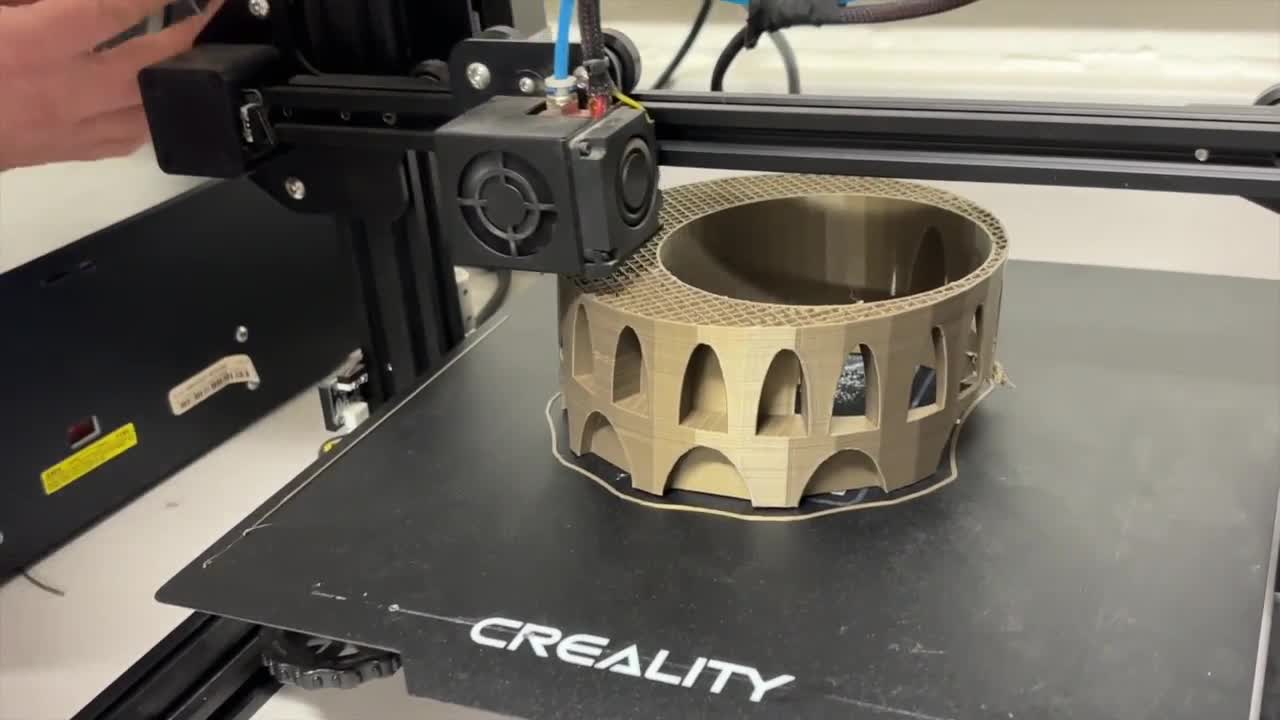WALKER, Mich. — The sound of a router echoes through what used to be an auto shop at Kenowa Hills as students grind out the base of a snowboard. Classic shop class.
But this isn't your typical shop class. The goal is not just skills in working with wood. It's skills working with digital printers, design software like CAD, plus physics and math.
Welcome to the Kenowa Hills STEM Academy, where students earn graduation credits by building everything from snowboards to roller coasters — and keeping the products they create.
"This is unlike any other STEM program I've found so far," says Steven Feutz, who runs the academy. "Students get two different credits for it. They get a core math or science credit, which is like a graduation requirement, but they also get that STEM elective credit."
The academy operates out of four rooms in what was once the old auto shop at what was Kenowa Hills High School but now houses Kenowa Hills Middle School. You can still see evidence of seven garage door bays, though only one remains functional. The space has been completely renovated with new woodworking equipment, 3D printers, laser cutters, and what Feutz proudly calls "the Jumbotron" — a massive overhead display visible from anywhere in the circular classroom.
"I want to decentralize," Feutz explains about the theater-in-the-round setup. "I don't want a front of the classroom, a back of the classroom. I think learning is a lot more collaborative and happens a lot better if everybody sees each other."
For Reyna Lobbezoo, the hands-on approach beats traditional classroom learning. "I think that it's a really cool opportunity, and not a lot of schools have this," she says while working on her snowboard graphics. "I've been into snowboarding for a while, but I've never had one, so I'm excited to go with this one."
The snowboard project isn't just about building something cool — it's the foundation for learning physics concepts like friction. Students test static and sliding friction, directly connecting their classroom work to how snowboards perform on snow. They'll later learn about different waxes and base structures when they tune their finished boards.
"Every project they do, we only do five projects a year for each class," Feutz says. "These kids only get five tests a year. They're big tests, but the tests are directly tied into what they're doing."
Oliviana McWilliams, who participated in STEM as an eighth-grader, notices the increased challenge level as a ninth-grader. "I feel like in ninth grade it's very more challenging," she says.
The academy serves up to 50 eighth-graders in the first two class periods, followed by ninth and tenth-graders learning introductory physics, chemistry and earth science. A final geometry class rounds out the day, mostly tenth-graders with some ninth-graders mixed in.
Feutz brings an unusual background to the role — he studied aerospace engineering and music theory before entering teaching through the Woodrow Wilson Teaching Fellowship program for STEM majors. That musical connection explains the two pianos in the classroom.
"When it's anybody's birthday, I ask them, 'What do you want happy birthday on?'" Feutz says with a grin. "There's a couple instruments I play well, and a couple that I do not play at all, so if they don't choose wisely, they're gonna get a real rough rendition."
The path to this modern facility wasn't smooth. The STEM Academy originally operated in a factory across the street before moving to the former auto shop. Plans for a high-end facility in the high school media center were scrapped when COVID-era construction costs doubled the budget.
"Then we moved into here, and this turned out to be a much better space anyway," Feutz reflects.
The renovation, completed this past summer, includes soundproof walls to separate the noisy workshop area from the classroom, a clean room for painting and epoxy work, and a technology lab housing 3D printers and laser cutters. Much of the woodworking equipment was recommended by co-teacher Jeremy Cusick, who told administrators, "If I have it at home, we need it in here."
Students use Computer-Aided Design (CAD) software to create 3D models before building their projects. The academy's large-format printer produces graphics on rice paper that students can apply to their snowboards, while 3D printers work around the clock creating custom pieces for projects like roller coasters for marbles.
Beyond the technical skills, the program emphasizes collaboration and real-world work habits. Students often work in randomly assigned groups and evaluate each other's contributions at project completion. Those peer evaluations directly impact individual grades.
It's a reflection of the real world the students will deal with as adults, Feutz notes. "We don't choose our co-workers. You have to figure it out, fight through all the drama, the butting of heads, the disagreements, and learn how to make it work."
The snowboards students are building would retail for $400 to $1,200 in shops, but they're gifted to students who only need to purchase their own boots, bindings and helmets if they want to hit the slopes.
For Oliviana, the collaborative skills extend beyond the classroom. "There's a lot of hands-on and more partner work," she says. "I feel like that'll be good to work in a job, because you have more experience — you've been with different groups, different people, different personalities. So you're kind of getting a taste of everything."
The program connects to pathways at the high school level, where students can continue with standalone engineering classes or explore skilled trades through the Kent Career Technical Center.
(Contact Robb Westaby at rwestaby@fox17online.com with story ideas for the Kenowa Hills, Walker and Northview neighborhoods.)
This story was initially reported by a journalist and has been converted to this platform with the assistance of AI. Our editorial team verifies all reporting on all platforms for fairness and accuracy.





